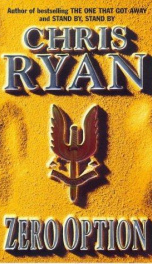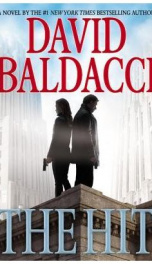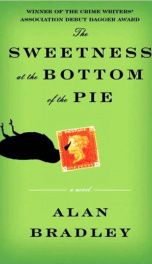Edward Estlin Cummings (October 14, 1894 – September 3, 1962), popularly known as E. E. Cummings, with the abbreviated form of his name often written by others in lowercase letters as e. e. cummings (in the style of his poems), was an American poet, painter, essayist, author, and playwright. His body of work encompasses approximately 2,900 poems, two autobiographical novels, four plays and several essays, as well as numerous drawings and paintings. He is remembered as a preeminent voice of 20th century poetry, as well as one of the most popular. Cummings' publishers and others have sometimes echoed the unconventional orthography in his poetry by writing his name in lower case and without periods. Cummings himself used both the lowercase and capitalized versions, but according to his widow did not, as reported in the preface of one book,[1] have his name legally changed to "e e cummings". He did, however, write to his French translator that he preferred the capitalized version ("may it not be tricksy").[2] One Cummings scholar believes that on the occasions Cummings signed his name in all-lowercase, the poet may have intended it as a gesture of humility, and not as an indication that it was the preferred orthography for others to use for his name.[3] Cummings was born in Cambridge, Massachusetts, on October 14, 1894 to Edward and Rebecca Haswell Clarke Cummings. He was named after his father but his family called him by his middle name. Estlin's father was a professor of sociology and political science at Harvard University and later a Unitarian minister. Cummings described his father as a hero and a person who could accomplish anything that he wanted to. He was well skilled and was always working or repairing things. He and his son were close, and Edward was one of Cummings' most ardent supporters. His mother, Rebecca, never partook in stereotypically "womanly" things. She loved poetry and reading to her children. Raised in a well-educated family, Cummings was a very smart boy and his mother encouraged Estlin to write more and more poetry every day. His first poem came when he was only three: "Oh little birdie oh oh oh, With your toe toe toe." His sister, Elizabeth, was born when he was six years old. His boyhood home, the E.E. Cummings House, is listed on the National Register of Historic Places.[4] In his youth, Estlin Cummings attended Cambridge Latin High School. Early stories and poems were published in the Cambridge Review, the school newspaper. From 1911 to 1916, Cummings attended Harvard University, from which he received a B.A. degree in 1915 and a Master's degree for English and Classical Studies in 1916. While at Harvard, he befriended John Dos Passos, at one time rooming in Thayer Hall, named after the family of one of his Harvard acquaintances, Scofield Thayer, and not yet a freshman-only dormitory.[5] Several of Cummings's poems were published in the Harvard Monthly as early as 1912. Cummings himself labored on the school newspaper alongside fellow Harvard Aesthetes Dos Passos and S. Foster Damon. In 1915, his poems were published in the Harvard Advocate. From an early age, Cummings studied Greek and Latin. His affinity for each manifests in his later works, such as XAIPE (Greek: Khaire!, "Rejoice!"; a 1950 collection of poetry), Anthropos (Greek: "human"; the title of one of his plays), and "Puella Mea" (Latin: "My Girl"; the title of his longest poem). In his final year at Harvard, Cummings was influenced by writers such as Gertrude Stein and Ezra Pound. He graduated magna cum laude in 1916, delivering a controversial commencement address entitled "The New Art". This speech gave him his first taste of notoriety, as he managed to give the false impression that the well-liked imagist poet, Amy Lowell, whom he himself admired, was "abnormal". For this, Cummings was chastised in the newspapers. In 1917, Cummings's first published poems appeared in a collection of poetry entitled Eight Harvard Poets. In 1917 Cummings enlisted in the Norton-Harjes Ambulance Corps, along with his college friend John Dos Passos. Due to an administrative mix-up, Cummings was not assigned to an ambulance unit for five weeks, during which time he stayed in Paris. He became enamored with the city, to which he would return throughout his life. On September 21, 1917, just five months after his belated assignment, he and a friend, William Slater Brown, were arrested on suspicion of espionage. The two openly expressed anti-war views; Cummings spoke of his lack of hatred for the Germans.[6] They were sent to a military detention camp, the Dépôt de Triage, in La Ferté-Macé, Orne, Normandy, where they languished for 3½ months. Cummings's experiences in the camp were later related in his novel, The Enormous Room about which F. Scott Fitzgerald opined, "Of all the work by young men who have sprung up since 1920 one book survives- The Enormous Room by e e cummings....Those few who cause books to live have not been able to endure the thought of its mortality."[7] He was released from the detention camp on December 19, 1917, after much intervention from his politically connected father. Cummings returned to the United States on New Year's Day 1918. Later in 1918 he was drafted into the army. He served in the 12th Division at Camp Devens, Massachusetts, until November 1918.[8][9] Cummings returned to Paris in 1921 and remained there for two years before returning to New York. During the rest of the 1920s and 1930s he returned to Paris a number of times, and traveled throughout Europe, meeting, among others, Pablo Picasso. In 1931 Cummings traveled to the Soviet Union and recounted his experiences in Eimi, published two years later. During these years Cummings also traveled to Northern Africa and Mexico and worked as an essayist and portrait artist for Vanity Fair magazine (1924 to 1927). Cummings' papers are held at the Harry Ransom Center at the University of Texas at Austin. In 1926, Cummings's father was killed in a car accident. Though severely injured, Cummings's mother survived. Cummings detailed the accident in the following passage from his i: six nonlectures series given at Harvard in 1952–1953: ... a locomotive cut the car in half, killing my father instantly. When two brakemen jumped from the halted train, they saw a woman standing – dazed but erect – beside a mangled machine; with blood spouting (as the older said to me) out of her head. One of her hands (the younger added) kept feeling her dress, as if trying to discover why it was wet. These men took my sixty-six year old mother by the arms and tried to lead her toward a nearby farmhouse; but she threw them off, strode straight to my father's body, and directed a group of scared spectators to cover him. When this had been done (and only then) she let them lead her away. His father's death had a profound impact on Cummings and his work, who entered a new period in his artistic life. Cummings began to focus on more important aspects of life in his poetry. He began this new period by paying homage to his father's memory in the poem "my father moved through dooms of love".[10] Born into a Unitarian family, Cummings exhibited transcendental leanings his entire life. As he grew in maturity and age, Cummings moved more toward an "I, Thou" relationship with God. His journals are replete with references to “le bon Dieu” as well as prayers for inspiration in his poetry and artwork (such as “Bon Dieu! may I some day do something truly great. amen.”). Cummings "also prayed for strength to be his essential self ('may I be I is the only prayer--not may I be great or good or beautiful or wise or strong'), and for relief of spirit in times of depression ('almighty God! I thank thee for my soul; & may I never die spiritually into a mere mind through disease of loneliness')."[11] Cummings was married three times, including a long common-law marriage. Despite Cummings's consanguinity with avant-garde styles, much of his work is quite traditional. Many of his poems are sonnets, albeit often with a modern twist, and he occasionally made use of the blues form and acrostics. Cummings's poetry often deals with themes of love and nature, as well as the relationship of the individual to the masses and to the world. His poems are also often rife with satire. While his poetic forms and themes share an affinity with the romantic tradition, Cummings's work universally shows a particular idiosyncrasy of syntax, or way of arranging individual words into larger phrases and sentences. Many of his most striking poems do not involve any typographical or punctuation innovations at all, but purely syntactic ones. As well as being influenced by notable modernists including Gertrude Stein and Ezra Pound, Cummings's early work drew upon the imagist experiments of Amy Lowell. Later, his visits to Paris exposed him to Dada and surrealism, which in turn permeated his work. Cummings also liked to incorporate imagery of nature and death into much of his poetry. While some of his poetry is free verse (with no concern for rhyme or meter), many have a recognizable sonnet structure of 14 lines, with an intricate rhyme scheme. A number of his poems feature a typographically exuberant style, with words, parts of words, or punctuation symbols scattered across the page, often making little sense until read aloud, at which point the meaning and emotion become clear. Cummings, who was also a painter, understood the importance of presentation, and used typography to "paint a picture" with some of his poems.[14] The seeds of Cummings's unconventional style appear well established even in his earliest work. At age six, he wrote to his father: Following his novel The Enormous Room, Cummings's first published work was a collection of poems entitled Tulips and Chimneys (1923). This work was the public's first encounter with his characteristic eccentric use of grammar and punctuation. Some of Cummings's most famous poems do not involve much, if any, odd typography or punctuation, but still carry his unmistakable style, particularly in unusual and impressionistic word order. For example, the aptly titled "anyone lived in a pretty how town" begins:























